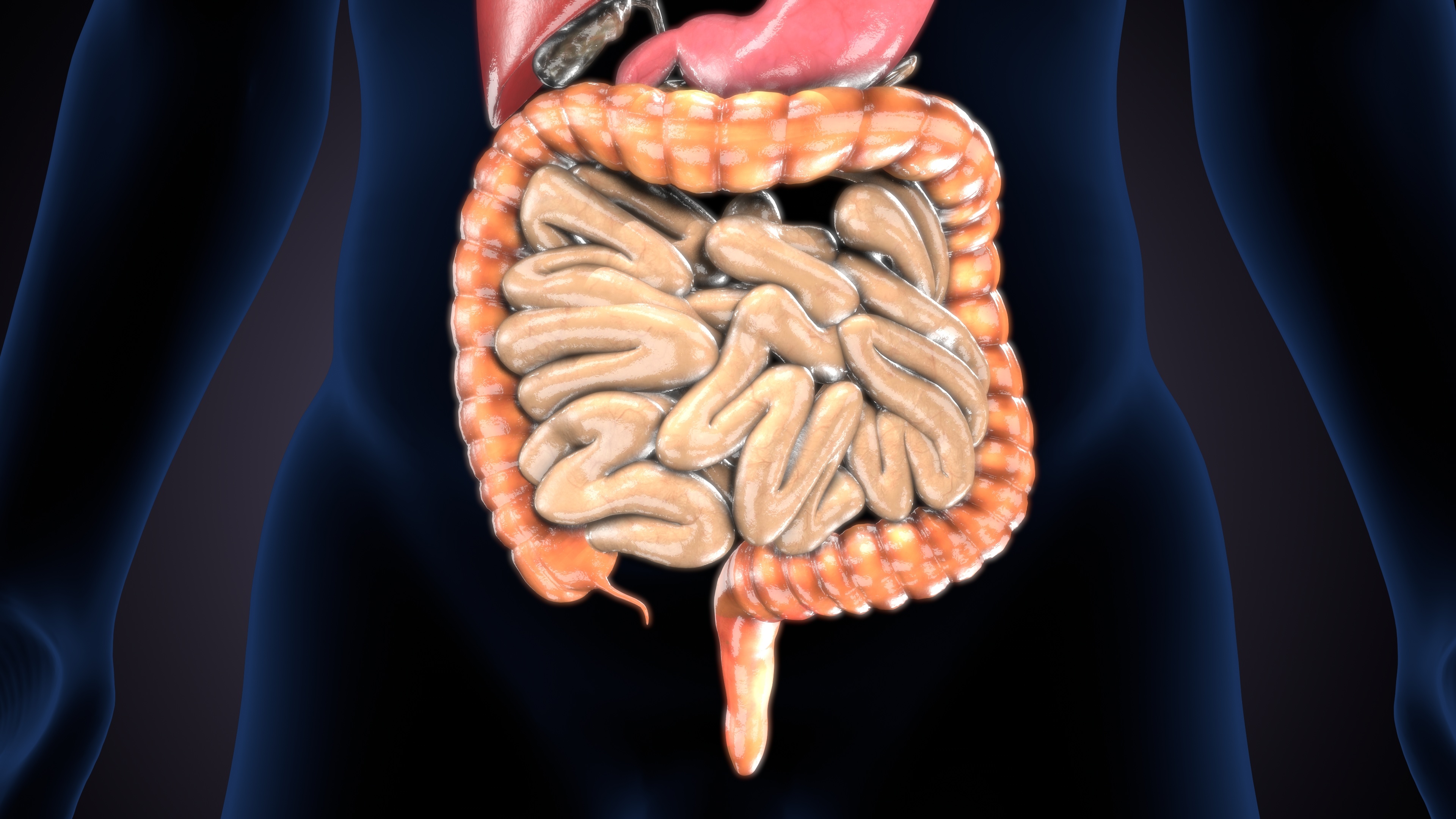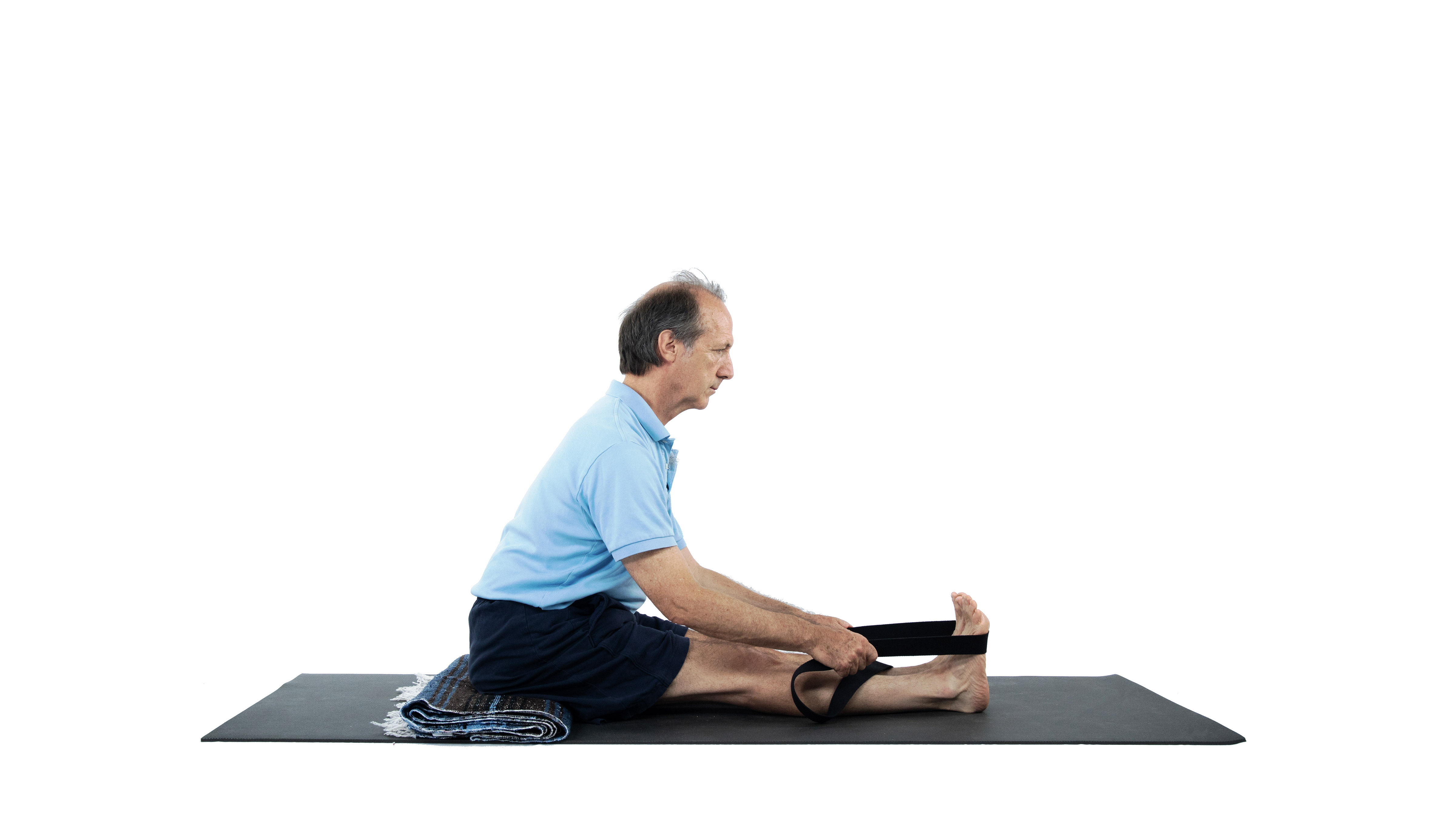View basket (0 items $0.00)

Digestive Health: How Yoga Can Help Symptoms of Irritable Bowel Syndrome
Digestive health is crucial to the body’s overall wellbeing. The digestive system breaks down foods (solids and liquids) into their chemical components—carbohydrates, fats, and proteins—which the body absorbs as nutrients and uses for energy for growth, maintenance, and repair.
Digestion happens in three phases: first in the mouth, then the stomach, and finally in the small intestine. After the last phase, the digested food is absorbed and transported into the bloodstream.
Like any piece of complicated machinery, the digestive tract is susceptible to breakdown. Some of the general factors that can impact our digestive health include diet, sleep, exercise, physical or mental stress, chronic disease, environment, travel, and medicines. In some cases, the problem could also be genetic.
What Is Irritable Bowel Syndrome? 
Irritable Bowel Syndrome (IBS) affects the large intestine (colon). The chief complaints of IBS are cramping, abdominal pain, bloating, gas, diarrhea, and constipation. This digestive condition is somewhat of a mystery since people with IBS show no physical damage to their stomach, intestines, or colon.
While the exact cause of IBS is unclear, the risk factors include those that were mentioned above for overall digestive health. Additionally, the balance of gut bacteria may not be optimal in IBS, or the condition may also have something to do with the peristaltic movements in the gut that help to move digested food downstream. In some people, the wave of movements may be too fast or too slow.
Whatever the reason, this digestive condition is a clear example of the gut-brain nexus since, in the majority of people, there is a close relationship between stress (physical, mental, or emotional) and the onset of IBS symptoms.
It is currently unclear whether chronic digestive problems create mental stress or whether a heightened level of mental stress makes the gut overly sensitive to certain foods. However, people with IBS find that lifestyle changes, such as following a routine, working on better sleep habits, and reducing stress, improve IBS symptoms.
Yoga and IBS
The effective stress-reducing benefits of yoga, including a well-balanced yoga asana practice, together with a simple mindful meditation and pranayama practice, could help reduce IBS symptoms. It is well known that practicing yoga for physical, mental, and emotional wellbeing also supports overall digestive health.
Several anecdotal reports claim that the continuous practice of yoga resolves digestive problems such as bloating, cramping, irregularities in elimination. In conditions like Irritable Bowel Syndrome, practicing yoga helps to bring the digestive system back into balance during flares.
A meta-analysis report on the effect of yoga in the therapy of irritable bowel syndrome: A systematic review of the effectiveness of yoga in relieving IBS symptoms (1) arrived at the following conclusions:
-
Yoga appears to be safe for all people with IBS.
-
A gentle yoga session such as Iyengar yoga, when practiced twice weekly for 60 minutes per session, may be effective at improving IBS symptoms. The emphasis on alignment in Iyengar yoga and the duration (practicing yoga for 60 minutes twice a week) likely plays a role in alleviating stress and modulating the brain-gut axis.

-
Asana practice (postures), in combination with other practices like walking, meditation, or breathing practice, provides respite from the stressful life and improves IBS symptoms.
A few yoga poses are especially helpful for IBS and overall digestive health. These include:
-
Forward Bends: Seated or standing forward bends relax the stomach muscles, tone the hips, and improve circulation of blood to the abdominal organs through a massage-like action of the abdominal organs.
-
Knee-to-Chest Pose: This pose provides the same benefits as forward bends. Also known as the “gas-relieving” pose, this asana stimulates sluggish digestion and bowel movement.

-
Twists and Side Bends: Twists and side bends have a wringing effect on the abdomen and are helpful for a sluggish gut characterized by bloating and constipation. Twists and side bends improve digestion, improve circulation to the abdominal organs, and have a stimulating effect on the abdomen.
-
Gentle Inversion: Viparita Karani (Legs Up the Wall Pose) can be very relaxing both at the start of the session and towards the end of class. The pose is beneficial for an overactive gut with cramping and a tendency for diarrhea as it improves digestion and can relieve symptoms of diarrhea.
In addition to asanas, the practices of pranayama and meditation help in combating mental stress. Mental stress affects normal breathing and is reflected in an individual’s breathing state, especially when breathing is uneven, shallow, rapid, or restrained. 
Meditation and pranayama encourage breathing to become smoother, deeper, and more rhythmic. This relaxes the intercostal muscles and the abdominal muscles of the belly, stimulates salivary gland secretion, accelerates digestion, and promotes normal movement of food through the gut.
In addition, the nervous system is encouraged to transition to a relaxing “rest-and-digest” mode. Naturally, these benefits will bring a sense of inner peace, thereby freeing up the gut and brain from inner turmoil.
Reprinted with permission from Accessible Yoga.blogspot.com
Study with YogaUOnline and renowned yoga teacher and writer, Judith Hanson Lasater - Taking Refuge: Coming Home to Ourselves.

Rammohan (Ram) Rao comes from a family of Ayurvedic practitioners and Vedic teachers in India tracing back to the illustrious Vedic-acharya Rishi Kaundinya (although Ram admits he cannot do the Eka pada or Dwi pada Kaundinyasana). With a doctorate in Neuroscience, Ram was a Research Associate Professor at the Buck Institute for Research on Aging. He focused on various aspects of age-associated neurodegenerative diseases with an emphasis on Alzheimer’s disease. In addition, Ram completed the academic training at the California College of Ayurveda (CCA) and received his certification as a Clinical Ayurvedic Specialist. He has been a faculty member of the California College of Ayurveda and teaches in their Nevada City location.
Ram is also a dedicated Hatha yoga practitioner and is a Registered Yoga Teacher from Yoga Alliance USA. In his spare time, he offers consultations in YAMP techniques (Yoga, Ayurveda, Meditation & Pranayama). Ram has published several articles in major Yoga/Ayurveda magazines and has been a featured speaker in several national and international meetings and symposia. He is a member of the National Ayurvedic Medical Association (NAMA) and is on the Research Board of the Association of Ayurvedic Professionals of North America (AAPNA).
Resources
1. Effect of Yoga in the Therapy of Irritable Bowel Syndrome: A Systematic Review. (2016, December 14). Retrieved from https://www.ncbi.nlm.nih.gov/pubmed/27112106
Featured Courses










